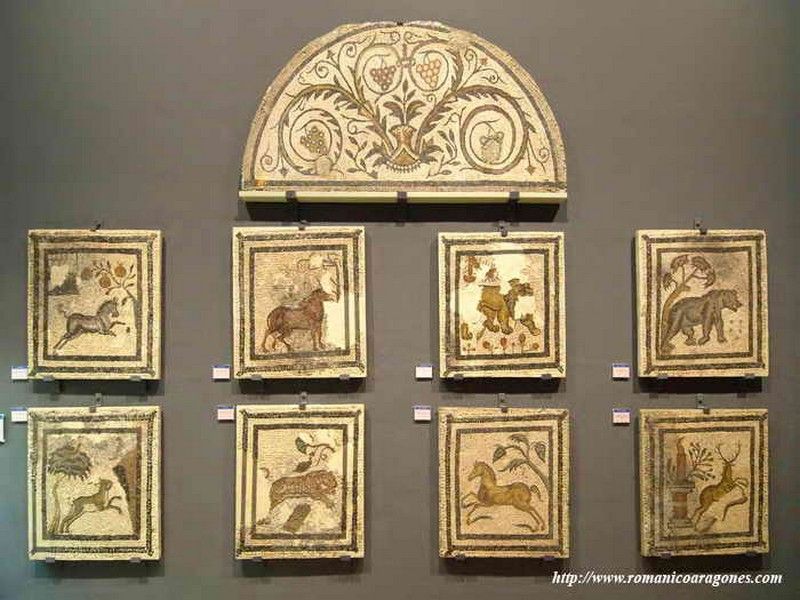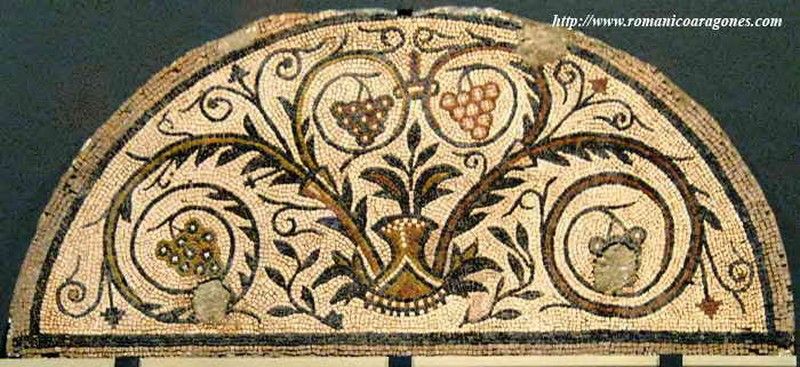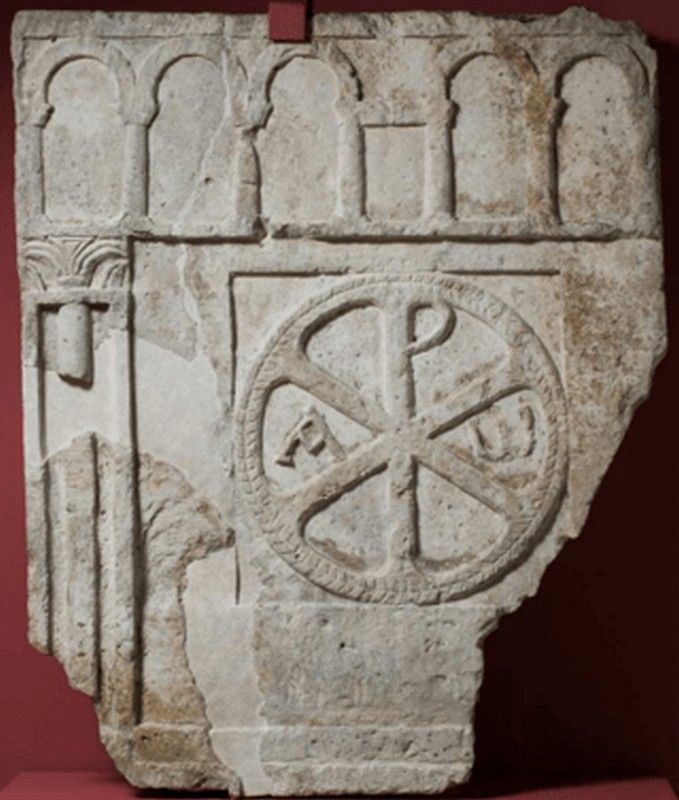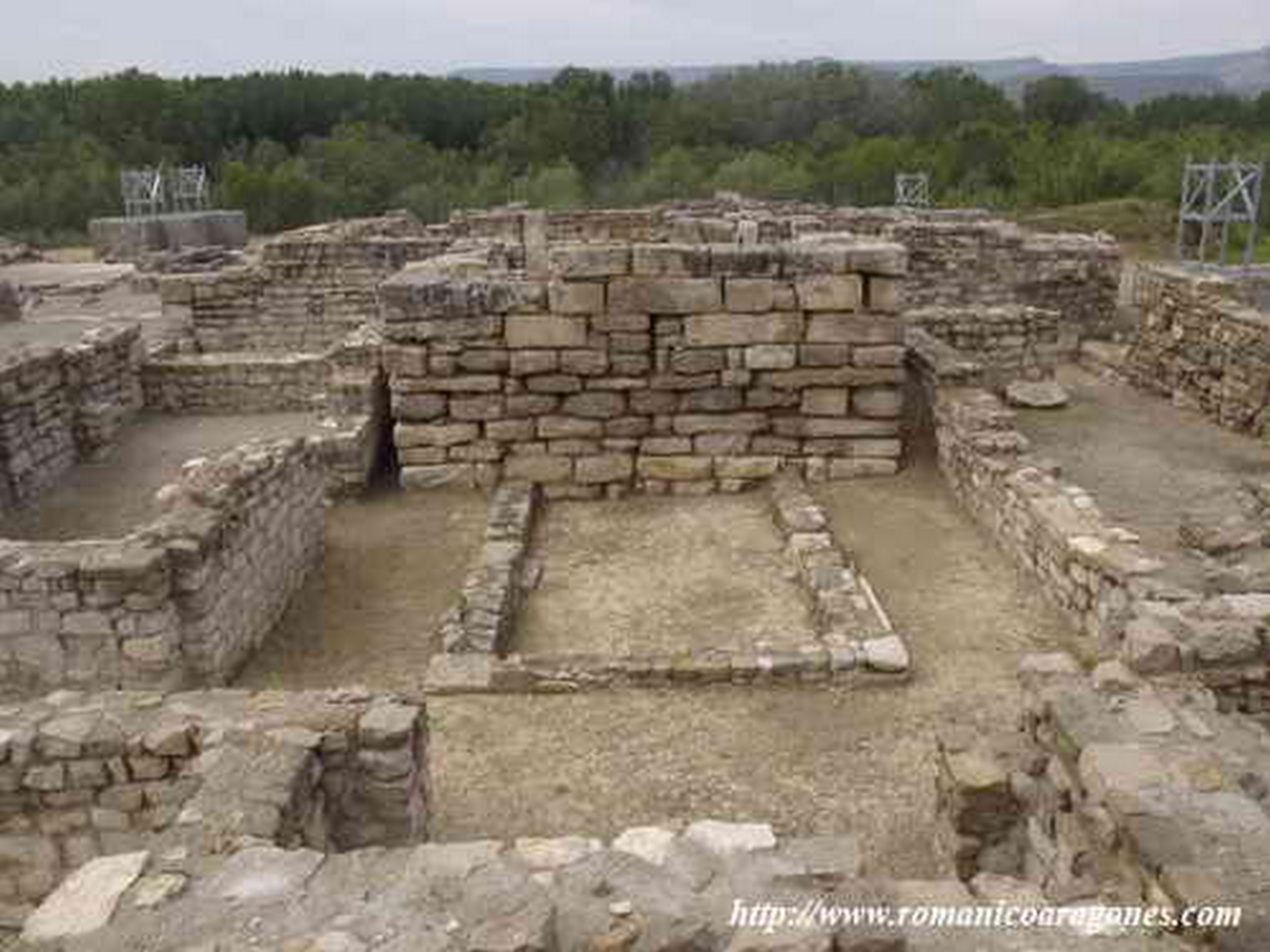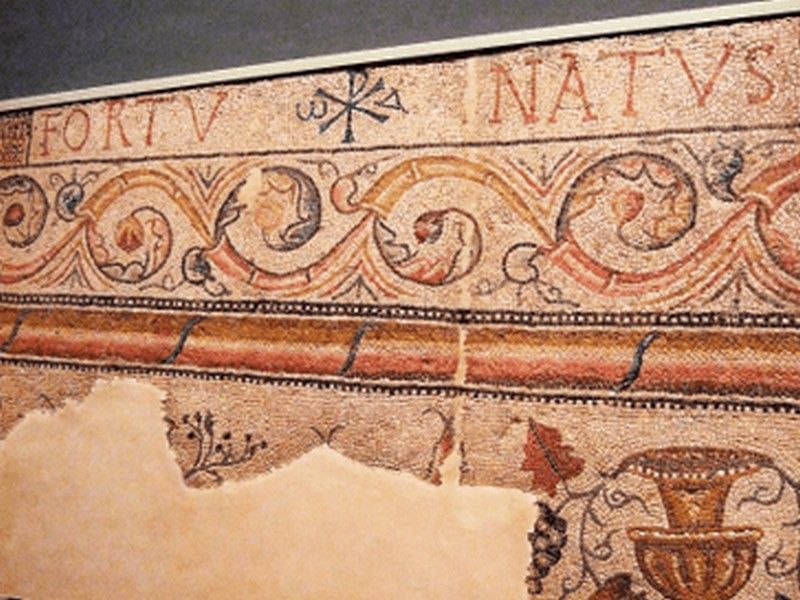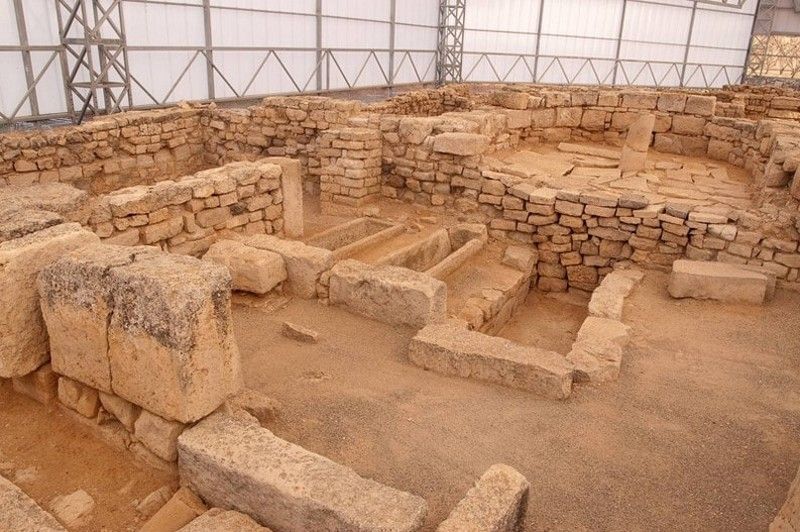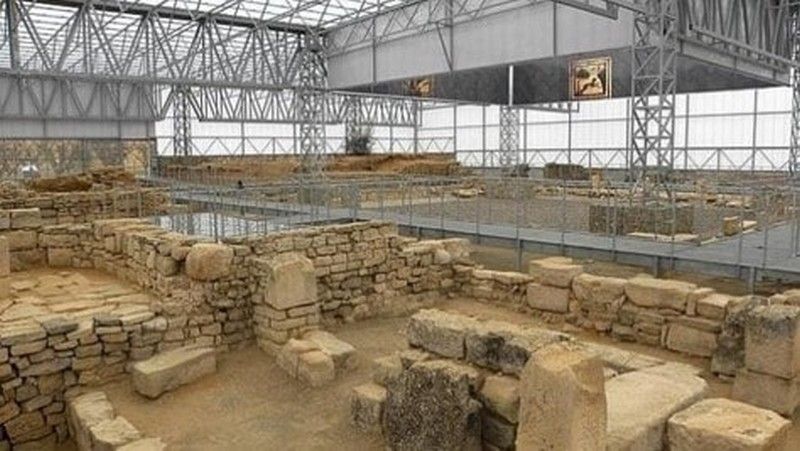VILLA FORTUNATUS
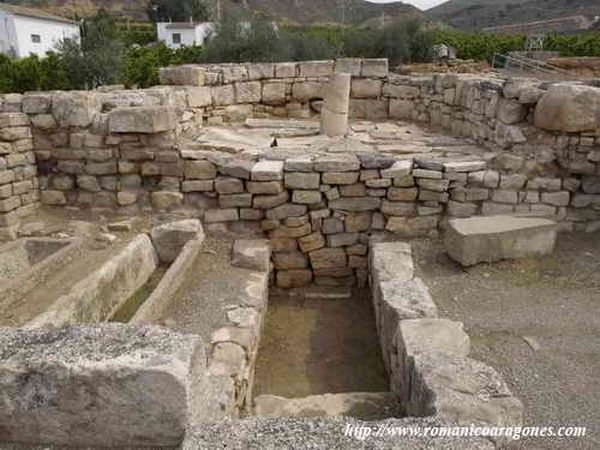
Historic environment
Villa Fortunatus is located about four kilometers from the urban center of Fraga (Huesca), on the bank of the Cinca River, next to the Roman road that linked Ilerda (Lérida) and Caesaraugusta (Zaragoza). It is considered one of the most important examples of Roman rural architecture in Aragon. The original town was built at the end of the 19th century. I AD, or beginning of the s. II AD, but the complex that is preserved today is dated to the 16th century. IV AD On the northeast side of the town, after its abandonment, a paleo-Christian basilica with a rectangular plan was superimposed between the 4th and 5th centuries, which continued to be occupied during the Visigothic period.
Description
The stately building of the villa has a classic layout, with a peristyle, or porticoed patio, around which the various rooms are located. In the eastern area were the thermal baths and latrines and in the western area the private area of the residence, with the owners’ rooms located around a small atrium. It is in this area where the basilica-shaped structure intended for Christian worship was built.
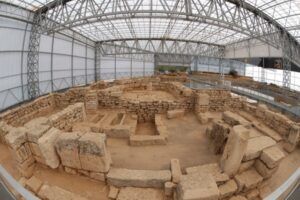 A large part of the rooms of the town are or were, since many of them can be visited in the Museum of Zaragoza, paved with mosaics, among which the one with a inscription, FORTV-NATVS, which currently gives its name to the town.
A large part of the rooms of the town are or were, since many of them can be visited in the Museum of Zaragoza, paved with mosaics, among which the one with a inscription, FORTV-NATVS, which currently gives its name to the town.
The basilica consists of a main nave and two lateral ones, a head that is made up of three rooms aligned with the naves, where the two lateral ones have been used as sacristies and the central one as an intermediate space between the iconostasis and the rectangular apse that protruded from the building. to the northeast. The baptistery is located on the opposite side of the chancel, to the southwest of the nave. The gate would be located in the iconostasis, decorated with reliefs of a chrismon and with an archway of horseshoe arches. This gate is currently on display in the Zaragoza Museum.
Both inside the church and in its surroundings there is a necropolis from which we can see several sarcophagi in which some even preserve their lauda. The head of the temple, which is canonically oriented, is flat towards the outside, however, towards the inside the abdisal cylinder is clearly drawn; Centering it was the column that supported the altar table, with a small cavity excavated at its upper end to contain the collection of relics. In the area at the head of the temple you can see a small opening in the shape of a loophole that was undoubtedly designed to give light to the interior. However, what is striking is the fact that the floor level is above this opening, which makes it clear that we are dealing with two different levels of flooring, and, therefore, of use.
Just in front of the head of the basilica, we have a structure corresponding to a stairwell that initially, during 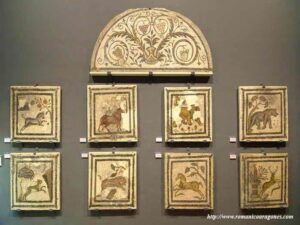 the excavation work was interpreted as possible access to a hypothetical crypt ; However, this crypt does not exist and it seems that this staircase corresponds to the communication between the noble rooms of the owner of the Roman villa; In fact, some beautiful mosaics were found in this area.
the excavation work was interpreted as possible access to a hypothetical crypt ; However, this crypt does not exist and it seems that this staircase corresponds to the communication between the noble rooms of the owner of the Roman villa; In fact, some beautiful mosaics were found in this area.
In the baptistery, located between four bases that delimit it, we have a pool about 70 centimeters deep as a swimming pool. It is a very important and revealing space, since it refers us to the rites of early Christian baptism by immersion, and, furthermore, it is located in the appropriate place for this, outside the temple, since the baptism had to be received before to access it.
We have a temple large enough to doubt that it is an exclusively private use of the inhabitants of the town, so it seems obvious to think that a larger population must have settled in the area from the 17th century onwards. IV.
Rafael Caballero for URBS REGIA
Other interesting information
Visits to the general public
Bibliography
MAGALLÓN BOTAYA, M.A., 1992: La Romanización. Fraga en la Antigüedad (1ª ed.), Zaragoza, M.I. Ayuntamiento de Fraga.
PUERTAS TRICAS, R., 1972: “Trabajos de planimetría y excavación en la Villa Fortunatus, Fraga (Huesca)”, Noticiario Arqueológico Hispánico. Arqueología 1. Madrid: Ministerio de Educación y Ciencia, 69-82.
SERRA RAFOLS, J. DE C., 1943: “La Villa de Fortunatus, de Fraga”, Ampurias, 5, 5-35.
UTRERO AGUDO, M.A., 2006: Villa Fortunatus. Iglesias tardoantiguas y altomedievales en la Península Ibérica. Análisis arqueológico y sistemas de abovedamiento. Anejos de AEspA, 40. Madrid, CSIC., 570-571.
Portals






